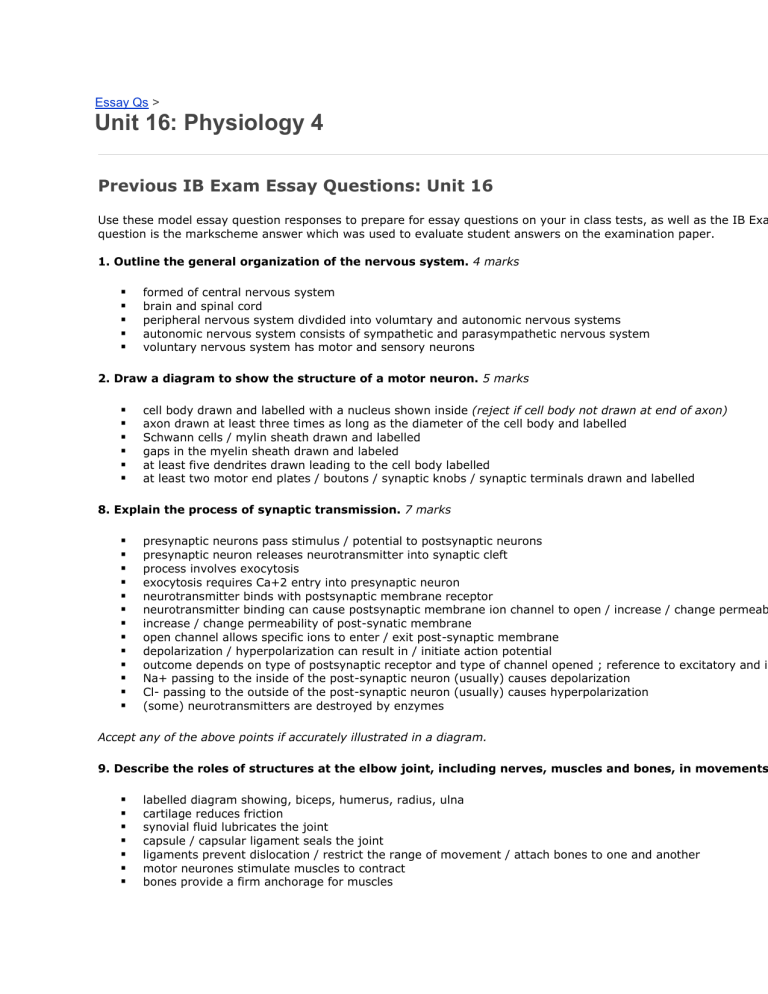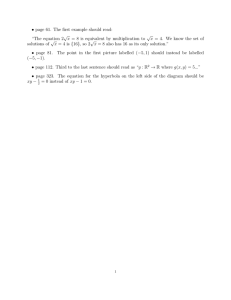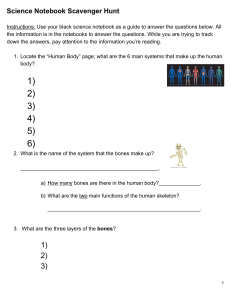
Essay Qs > Unit 16: Physiology 4 Previous IB Exam Essay Questions: Unit 16 Use these model essay question responses to prepare for essay questions on your in class tests, as well as the IB Exa question is the markscheme answer which was used to evaluate student answers on the examination paper. 1. Outline the general organization of the nervous system. 4 marks formed of central nervous system brain and spinal cord peripheral nervous system divdided into volumtary and autonomic nervous systems autonomic nervous system consists of sympathetic and parasympathetic nervous system voluntary nervous system has motor and sensory neurons 2. Draw a diagram to show the structure of a motor neuron. 5 marks cell body drawn and labelled with a nucleus shown inside (reject if cell body not drawn at end of axon) axon drawn at least three times as long as the diameter of the cell body and labelled Schwann cells / mylin sheath drawn and labelled gaps in the myelin sheath drawn and labeled at least five dendrites drawn leading to the cell body labelled at least two motor end plates / boutons / synaptic knobs / synaptic terminals drawn and labelled 8. Explain the process of synaptic transmission. 7 marks presynaptic neurons pass stimulus / potential to postsynaptic neurons presynaptic neuron releases neurotransmitter into synaptic cleft process involves exocytosis exocytosis requires Ca+2 entry into presynaptic neuron neurotransmitter binds with postsynaptic membrane receptor neurotransmitter binding can cause postsynaptic membrane ion channel to open / increase / change permeab increase / change permeability of post-synatic membrane open channel allows specific ions to enter / exit post-synaptic membrane depolarization / hyperpolarization can result in / initiate action potential outcome depends on type of postsynaptic receptor and type of channel opened ; reference to excitatory and in Na+ passing to the inside of the post-synaptic neuron (usually) causes depolarization Cl- passing to the outside of the post-synaptic neuron (usually) causes hyperpolarization (some) neurotransmitters are destroyed by enzymes Accept any of the above points if accurately illustrated in a diagram. 9. Describe the roles of structures at the elbow joint, including nerves, muscles and bones, in movements labelled diagram showing, biceps, humerus, radius, ulna cartilage reduces friction synovial fluid lubricates the joint capsule / capsular ligament seals the joint ligaments prevent dislocation / restrict the range of movement / attach bones to one and another motor neurones stimulate muscles to contract bones provide a firm anchorage for muscles bones act as levers / change the torque / size / direction of forces tendons attach muscle to bone biceps and triceps are antagonistic biceps is the flexor / bends the elbow and triceps is the extensor / straightens the elbow joint biceps is attached to the radius and triceps is attached to the ulna Accept any of the above points if clearly drawn and correctly labelled in a diagram. 10. Describe the roles of nerves, muscles and bones in producing movement. 6 marks motor neurones carry impulses / messages to muscle nerves / neurones stimulate muscles to contract neurones control the timing of muscle contraction muscles provide the force for / cause movement muscles are attached to bone by tendons bones act as levers joints between bones control the range of movement antagonistic muscles cause opposite movements 11. Draw a labelled diagram to show the structure of a sarcomere. 5 marks Award 1 for each structure clearly drawn and correctly labelled. sarcomere – clearly indicated between Z lines; Z lines; actin filaments attached to Z line; myosin filaments with heads; (two) light bands; dark band;




